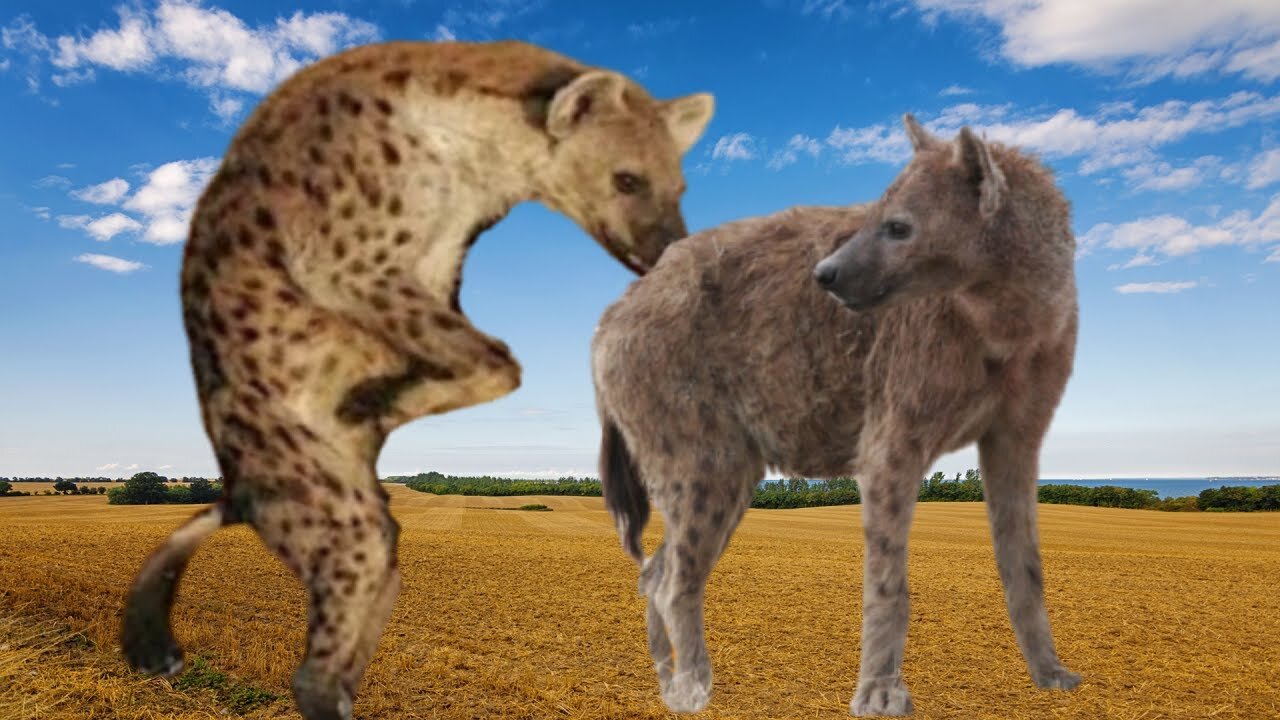Premium Only Content

Complete encounter with hyenas - a canine beast with relentless claw bites can even kill you smiling
Complete encounter with hyenas - a canine beast with relentless claw bites can even kill you smiling
Hyenas are medium to large carnivorous animals that occupy the top places in the food chain; the exception is the land wolf, which is an insectivore. Its head is large in relation to the body, with relatively large ears with a beaked or rounded termination and powerful maxillary muscles. The hind legs, strongly muscled, are shorter than the front legs, which gives the animal an asymmetrical appearance. Despite being efficient hunters, much of the hyena feed is based on carcasses that they find or steal from other carnivores. Hyenas are not speed runners, but they are resistant and can chase prey for several kilometers. Teething is made up of 32 to 34 strong teeth adapted for chewing bones. Its digestive system is quite well adapted to the digestion of bones and other harder parts of its prey. This efficiency in harnessing all the nutrients of a carcass is one of the reasons for the group's evolutionary success - in which the merely runner shapes, with a dentition more adapted to the consumption of soft parts, disappeared due to the ecological competition with the canids. With the exception of the land wolf, which is solitary, hyenas are gregarious animals and have nocturnal habits, although they may occasionally be active during the day. The hyena produces a sound similar to that of a laugh.
Their societies are dominated by females, which is not common among mammals, and females have very high levels of aggression, generating male hormones, which in fact interferes with procreation. Even the chicks are very aggressive and it is common to kill each other. Hyenas are born with their eyes open and their teeth fully formed.
They live in clans of up to forty animals. They usually hunt prey like wolves and rarely attack in ambush.
The group emerged in Eurasia in the Miocénico (about 10 million years ago), from the family Viverridae, with the separation of the genera Crocuta and Hyaena occurred in the Pliocene. The maximum diversification of hyenas was found in the Plistocene, with nine species that lived in Europe, Asia and Africa. European varieties became extinct at the end of the Ice Age, due to the extinction of the megafauna on which they fed and the dramatic climatic changes that then occurred.
-
 0:15
0:15
Mintbrookoffgrid
4 years agoDangerous encounter with young moose
37 -
 1:12
1:12
Tnewton
4 years agoClose Encounter with a Fox
1.19K -
 1:19
1:19
horsemanwangg
4 years agoParker's First Encounter with Snowshoes
122 -
 3:25:10
3:25:10
Retro Rewind Pod
13 hours ago📺🌄 SATURCADE ADVENTURES is back! Saturday Morning Cartoon Feels and Gaming Fun
203 -
 43:57
43:57
Daniel Davis Deep Dive
4 hours agoDeep Dive Intel Briefing /Lt Col Daniel Davis
11.3K3 -
 LIVE
LIVE
blackfox87
5 hours ago🟢 SUBATHON DAY 16 | Premium Creator | #DisabledVeteran
137 watching -
 1:10:13
1:10:13
Wendy Bell Radio
7 hours agoPet Talk With The Pet Doc
23.9K19 -
 1:11:37
1:11:37
Mike Rowe
8 days agoDoes China Control The NBA? | Enes Kanter Freedom #453 | The Way I Heard It
48K67 -
 LIVE
LIVE
TheItalianCEO
22 hours ago24-hr Arc Raiders Stream
85 watching -
 1:15:41
1:15:41
Steve-O's Wild Ride! Podcast
1 day ago $3.98 earnedBert McCracken: The Unlikely Godfather of Hardcore Music
30.1K